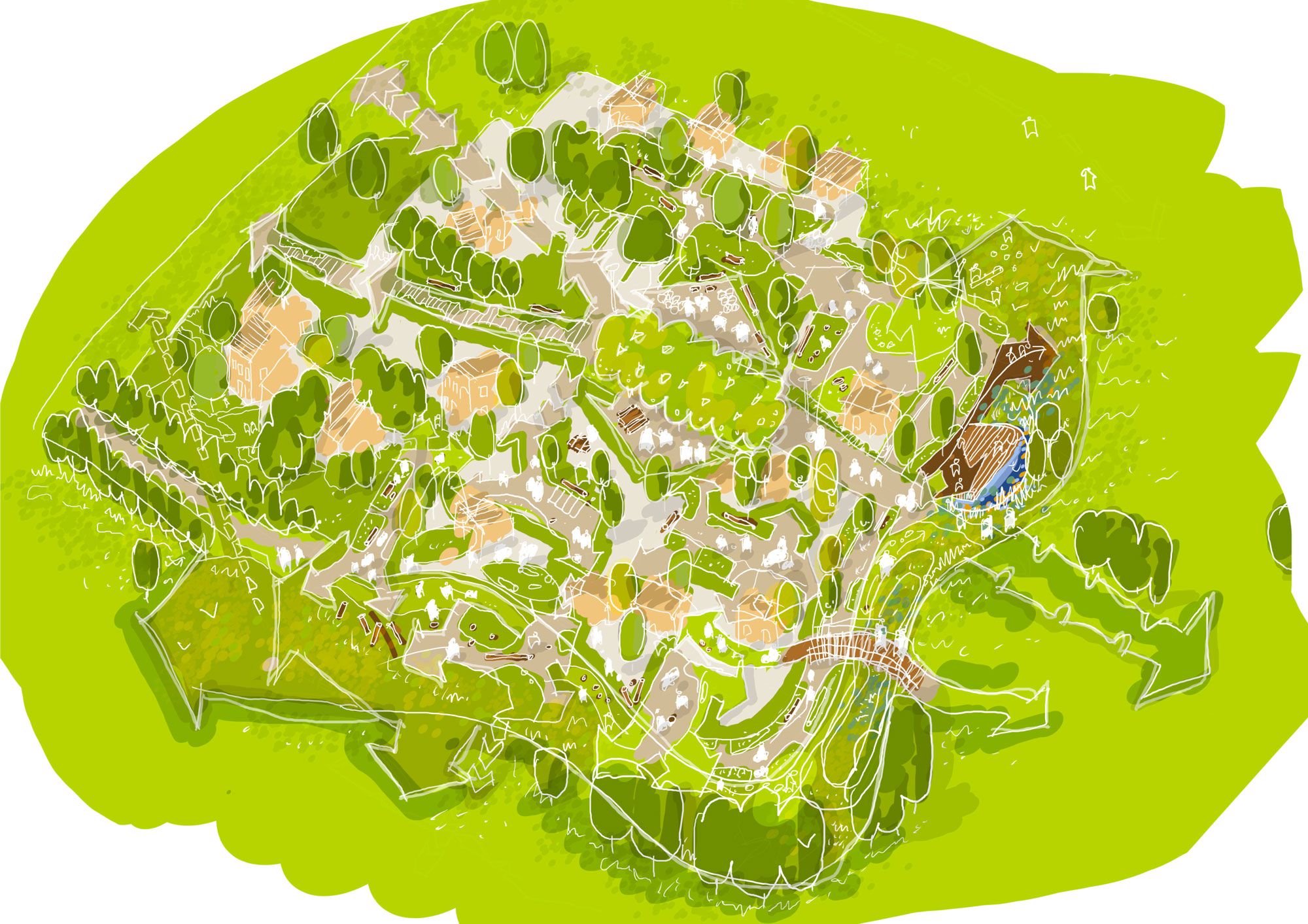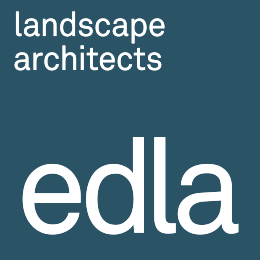
Biodiversity Net Gain: 10 Top Tips for Harnessing Landscape Architecture in Development Projects
Good landscape design is not just about creating visually appealing spaces for developments—it’s a collaborative process aimed at fostering resilience and promoting harmony between people and nature.
The Biodiversity Net Gain (BNG) legislation is a strong nudge towards creating rich and varied habitats within our built environment. While some UK developers have been future proofing for the expected BNG regulations for years, with the mandatory 10% BNG requirement as of 12 February 2024, now every development MUST demonstrate biodiversity gain, where richer and more varied habitats must be weaved into projects.
Landscape architecture plays a multifaceted role in achieving this, encompassing a thorough understanding of a site’s environmental complexities, its diverse ecosystems, and responding with innovative solutions to create places where both people and nature thrive.
At EDLA, we have been working closely with our clients and ecologists to not only retain existing biodiversity but also enhance and create new habitats, maximising space for people and nature to coexist in a sustainable way.
Here are 10 of our top tips to achieve BNG requirements for developers:
- Cultivate Collaboration:
There are numerous stakeholders to each development project, with BNG in full effect, ecologists bring crucial insights to the table, and we recommend allowing sufficient time and budget within projects to allow for landscape architects and ecologists to work together to undertake early stage scenario testing.
- Conduct Baseline Surveys:
Before embarking on design, conduct thorough ecology and habitat surveys to establish a foundation for informed decision-making. Baseline surveys are critical to understand the existing conditions of a site before any development begins. They provide valuable insights into the site’s ecological features, habitat types, vegetation, topography, and existing land uses. These surveys help identify important ecological resources, ensure compliance with regulations, assess environmental risks, and establish a baseline for monitoring and evaluation. By documenting the site’s current conditions, ecologists and landscape architects can make informed design decisions, protect valuable resources, and track changes over time to achieve sustainable outcomes for development projects.
- Details Matter: Navigating the Stages of Planning
If you are taking the route of an Outline Application, it’s essential to be mindful of the details that will need to be considered later on. By laying a strong foundation at this stage, you can streamline the planning process and ensure that key considerations are addressed effectively as the project progresses through detailed design, avoiding proposing parameters and habitats that may not actually be feasible.
- Embrace Iteration:
Recognise that achieving BNG is an iterative process. Work closely with landscape architects and ecologists to streamline workflows and allow for sufficient time in the project programme to test different options and ideas.
- Strategic Ecologist Selection:
Selecting an ecologist based on their experience and skills is a crucial step. Work with ecologists that intimately understand the Metric and have a wealth of experience, whilst their fees may be higher, their expertise will save you time and expense in the long run.
- Address Challenges as Opportunities:
Be prepared to navigate the complexities that may arise between visual mitigation, landscape character enhancement, and green infrastructure design. Embrace these diverse considerations as opportunities for innovation and growth.
- Focus on Longevity:
BNG is a journey, not a roadside attraction. Landowners are legally responsible for creating or enhancing habitat and managing that habitat for at least 30 years. Work with your landscape architects and ecologists to develop robust management plans to sustain biodiversity enhancements over a minimum of 30 years.
- Champion Connectivity:
Integrate climate-resilient green infrastructure to create interconnected networks that benefit both wildlife and communities, fostering a deeper connection to nature.
- Deliberate Species Selection and Sizing:
Ensure that what is being proposed within planting plans is widely available, and that the sizes that are being proposed can be sourced in a practical manner. Mature tree stock with large canopies may offer more points within the Metric, but they are logistically challenging to transport to high density urban site locations and are at much higher risk of failure than trees which are younger.
- Community Engagement and Education:
Involve local communities in the development process to garner support and enhance awareness about the significance of biodiversity. Organize workshops, or public forums to foster a sense of ownership and responsibility towards biodiversity conservation. By engaging with stakeholders, including residents, schools, and community groups, you can build a collective commitment to nurturing and protecting biodiversity within the development project and its surrounding areas.
Biodiversity Net Gain offers a transformative opportunity to create landscapes where both people and nature thrive. As EDLA landscape architects, we stand as an experienced partner to create viable projects that contribute to a more sustainable and biodiverse future for generations to come.
Ready to start creating sustainable and biodiverse landscapes for your development projects?
Contact us today to discuss how our experienced team at EDLA can help you achieve your Biodiversity Net Gain goals and bring your project to life!
